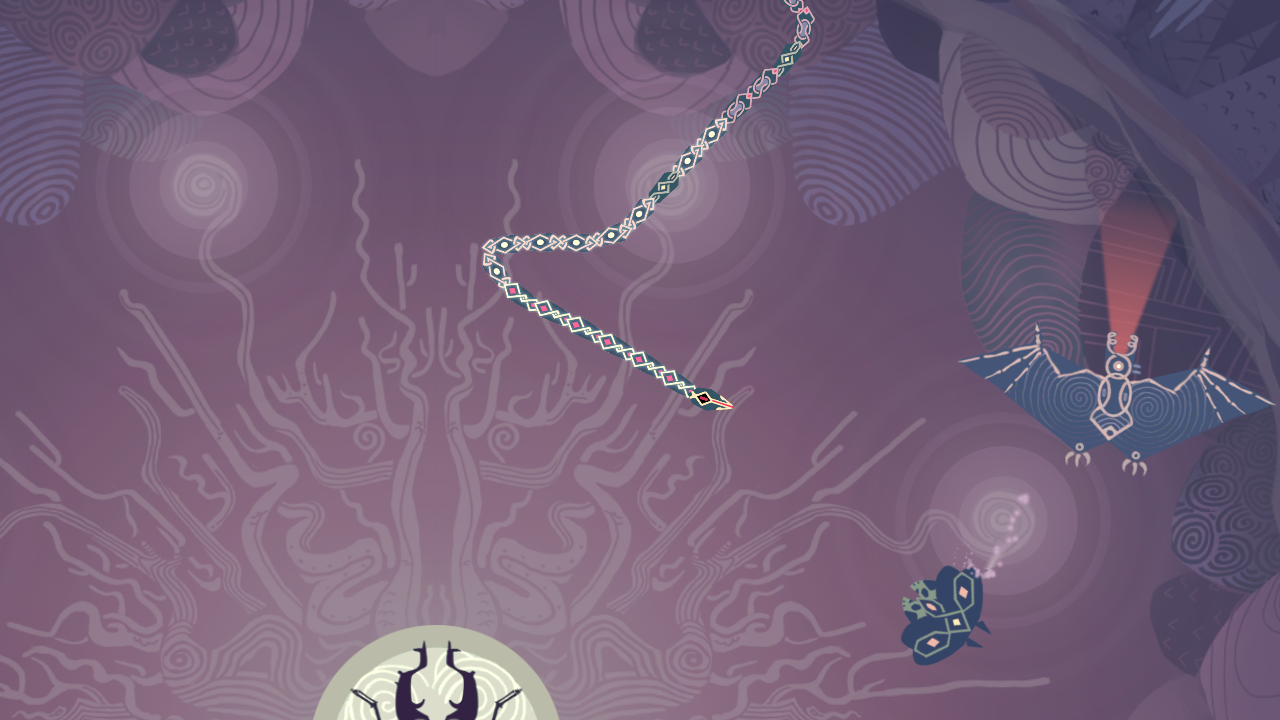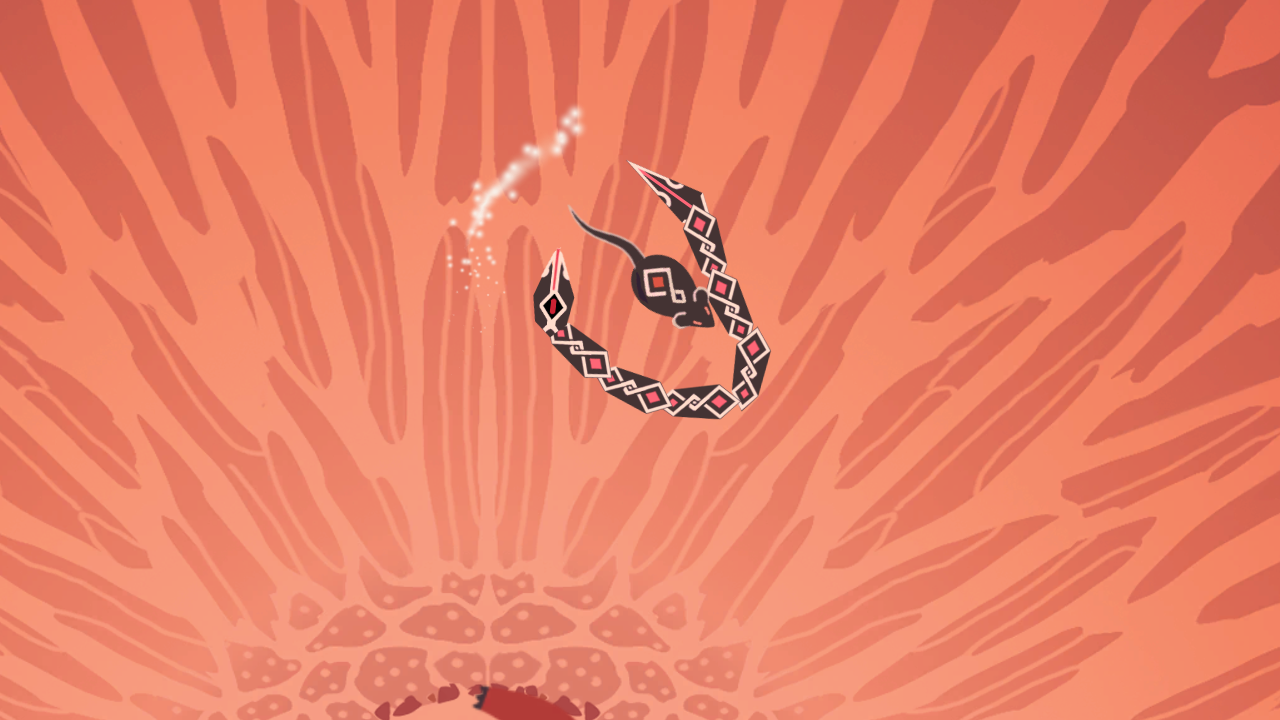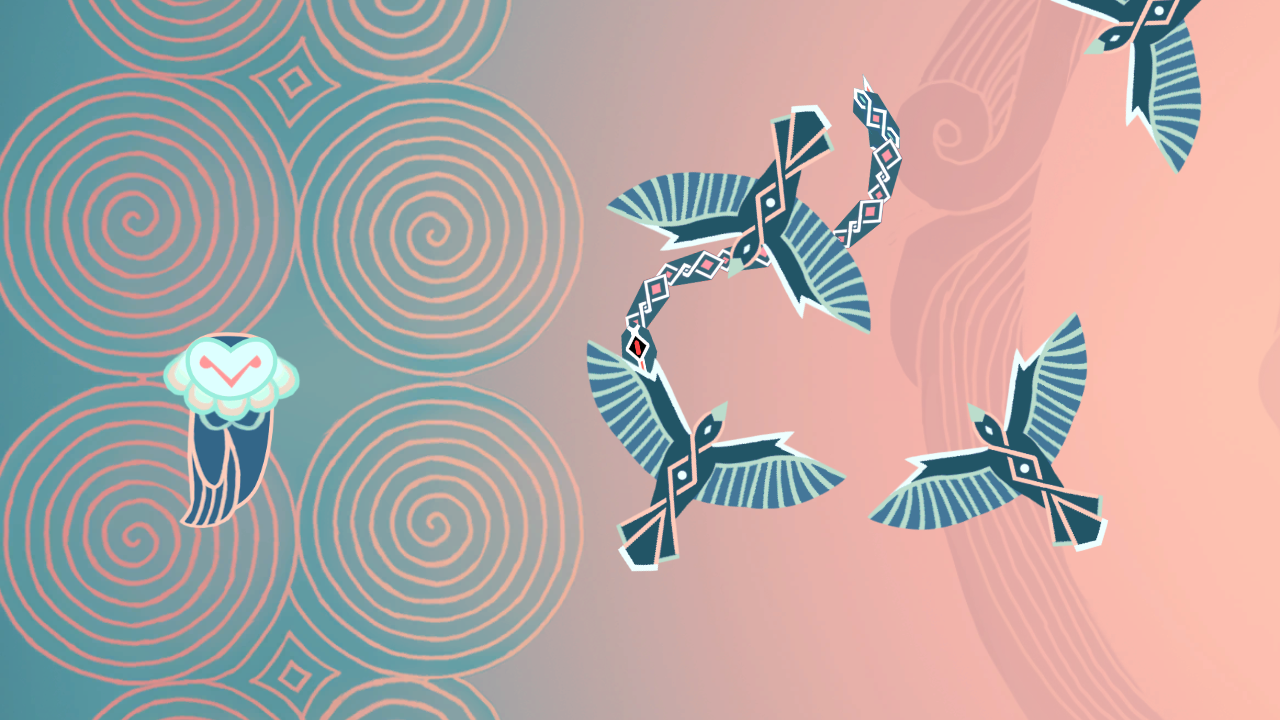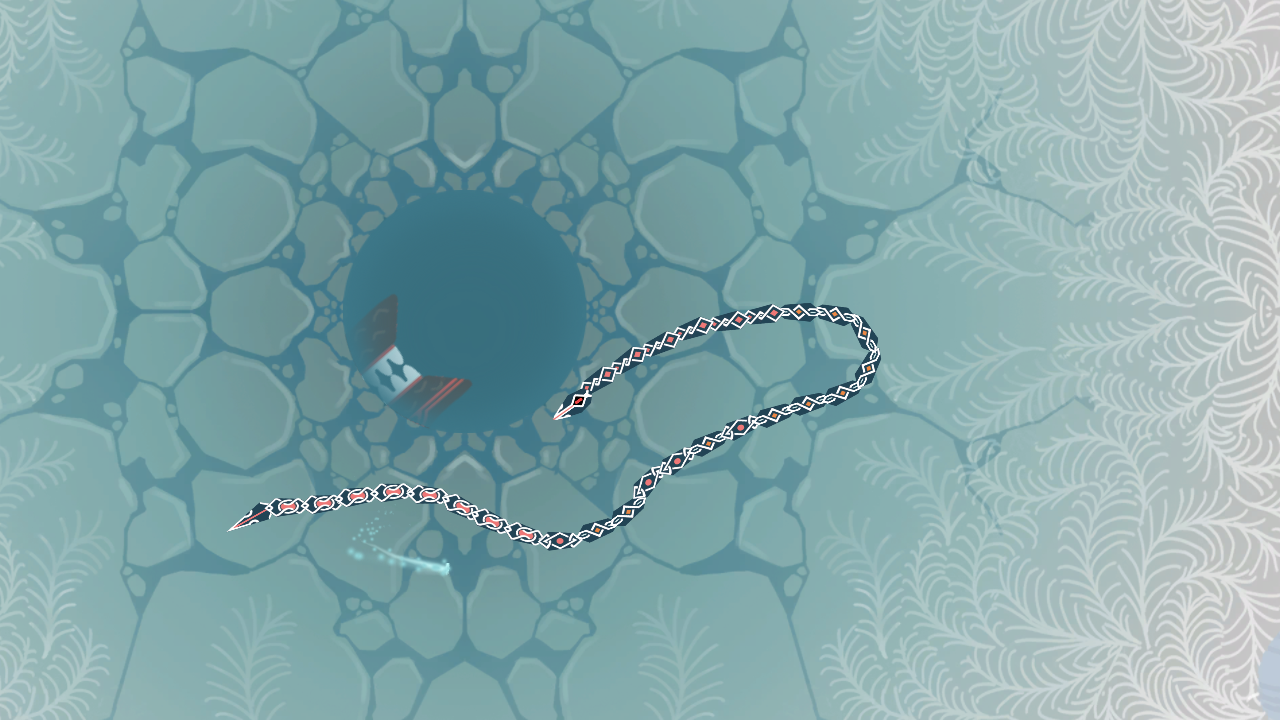Ophidia is a short and vibrant game which combines the legendary tail-eating serpent Ouroboros with the growth-based gameplay of games like Katamari Damacy. Consisting of four levels and a tutorial, this game can easily be completed in an hour, but the creative and polished gameplay make for an hour well spent.
At its core this is a relaxing game with simple controls. Ouroboros starts out as a small snake which will continuously follow the mouse with a single click. Each level has a small, medium, and large type of enemy along with a boss and you must fully circle an enemy to consume it and grow longer, gaining more segments from larger enemies. There is no risk of death, no time limit, and no points to worry about, but that doesn’t mean there isn’t any challenge. Bumping into an enemy will stun Ouroboros and send it slithering off in a different direction until you click to regain control. Ouroboros must also grab its tail to complete its circle around its prey and accidentally biting into any other segment of Ouroboros’s body will instead cut off that piece along with any pieces below it. Though you can potentially lose large portions of the snake’s body with a single mistake, enemies will respawn if pieces are lost and any pieces belonging to Ouroboros’s default body will soon regenerate on their own.

Enemy behavior adds in a much-needed puzzle element to the game since there wouldn’t be much to it if the whole experience boiled down to effortlessly making increasingly larger circles. With three enemy types in each of the four levels, which are each themed after a different element, and four bosses to deal with, there are various tricks which players will need to learn how to deal with. The smallest enemies tend to not pose much of a challenge, though that doesn’t mean they are all completely defenseless; grubs in the first level will curl up into a motionless ball when they see you, which can be a problem if a larger insect is nearby, while the penguin-like creatures in the icy third level will actively find larger animals to run near or will huddle together in a large, unbreakable circle if enough of them remain to form one. Meanwhile, mid-tier creatures tend to be focused on evasive tactics like turning invisible or jumping out of your circle before you can complete it. The largest enemies tend to require you to encircle them as quickly as possible while being wary of when and where you approach them, such as in the case of the second level’s frogs, which will spit out a fireball before leaping away.

Bosses remain completely inactive until you’ve grown large enough to take them on, but they aren’t pushovers despite being immobile. Every boss has some way of reaching out from within its circle to launch an attack and, since you need to eat most of the enemies present in a level to even potentially defeat a boss, you can’t afford to take too much damage. Thankfully, bosses have clear tells and attack in simple patterns so, while you’re unlikely to finish the fight completely unscathed, the trick is to start to close in from an ideal location right after a boss launches its attack and make as tight of a circle around it as possible while being careful not to bump into it and be sent flying. The style in which you simultaneously move and attack in Ophidia is smooth enough to be enjoyably relaxing yet there is a sense of excitement to these puzzle-fights as you try to capture your prey before it can escape without accidentally bumping into it or biting yourself in half. This game is particularly impressive because it is the product of a group of students from the Massachusetts Digital Games Institute and, much as Narbacular Drop paved the way for Portal, I hope we one day get to see an extended version of Ophidia or another game from one or more members of this team which utilizes similar mechanics.

There is no denying that the aesthetics for this game are phenomenal. The levels and creatures which inhabit them have a stylized, ‘flat’ look which makes them resemble murals. This look is further enhanced by each creature being composed of relatively simplistic shapes adorned with intricate patterns. One aesthetic touch which I am particularly fond of is that each segment Ouroboros gains has a pattern similar to the one found on the creature it was obtained from, giving the impression that Ouroboros is using its body as a tapestry upon which is woven the history of the world it is consuming, which is rather fitting for a creature commonly used to represent the endless cycle of eternity. The soundtrack also plays a large role in shaping the experience and features a surprisingly large and intricate cast of instruments. There is a distinct sense of the medieval here and all of the songs would feel right at home in a renaissance faire. Just as importantly, the songs each fit their respective levels with muted percussion for the dim, wooden earth level, more energy for the fire level, and so on. It’s a wonderful game to watch and listen to and the soothing aesthetics combine with the smooth gameplay to create an almost hypnotic experience.

Relaxing, exciting, vibrant, and passively tragic, Ophidia has the high quality of the best of passion projects and I hope we see more from its creators in the future.